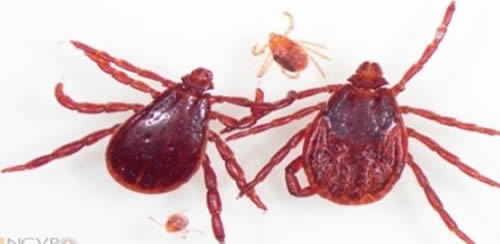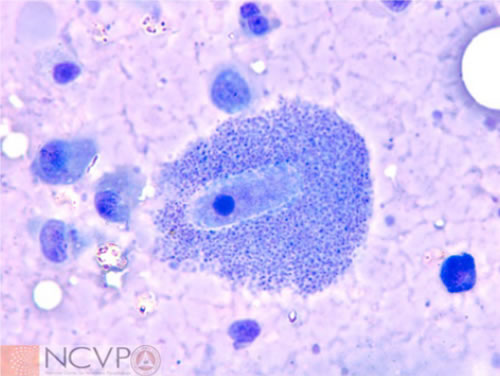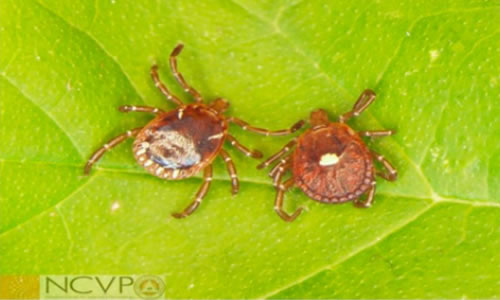Regents Professor and Krull-Ewing Chair in Veterinary Parasitology, Center for Veterinary Health Sciences, Oklahoma State University, Stillwater, OK, USA
Acari (ticks and mites) have long presented a common and difficult challenge to companion animal veterinarians worldwide. Although effective acaricides have been widely available for several decades, safety concerns and compliance issues have sometimes led to less than satisfying results, even when best practices were followed. Ticks present a particular health concern, not only because of infestation risk, but also due to their ability to serve as vectors of serious, sometimes fatal, disease agents. Many tick-borne agents also infect people, creating a zoonotic disease threat. The geographic distribution of ticks worldwide has dramatically expanded in recent decades, resulting in more pets and more people at risk of both infestation and infection. Fortunately, the advent of the isoxazoline class of systemic acaricides, including sarolaner, fluralaner, and afoxolaner, has provided veterinarians with a safe and highly effective strategy to combat ticks, mites, and the diseases that they cause in addition to providing persistent flea control.
Evolving Challenges Presented by Ticks
Ticks have become a more urgent issue for companion animal health in many areas of Europe, North America, and Australia in recent decades. One reason for this shift is the wide scale geographic expansion of several tick species into new regions. In Europe, the range of Dermacentor reticulatus has rapidly expanded in several areas1,2 and the Ixodes ricinus range has expanded steadily northward, facilitated by host availability and climate change3,4. Recent surveys in the UK have similarly shown that both Ixodes ricinus and D. reticulatus have increased in abundance and distribution in recent years.5,6 In North America, climate change and habitat conversion are thought to have resulted in expansion in the range of both Amblyomma spp. and Ixodes spp.7-9 A recent nationwide survey in Australia of ticks from dogs and cats suggested that the range of Rhipicephalus sanguineus on this continent has expanded southward,10 and new foci of the kangaroo tick have been established in some areas of South Australia11. As tick populations spread to new areas, the risk of disease transmission increases. Newly introduced ticks harboring tick-borne infections often catch the local community by surprise, resulting in widespread infection and disease, even when vaccines and highly effective tick control products are available. As veterinarians respond and implement control measures, the incidence of disease decreases. Combining vaccination with tick control has been shown to dramatically reduce the risk of canine Lyme disease in endemic areas. Several acaricides, including systemic isoxazolines, have been shown to reduce or block transmission of tick-borne infections in experimental models.
Tick Myths and Misperceptions
One common misunderstanding among pet owners is that ticks can only be acquired from natural areas outdoors. While ticks are very common in both grassy and wooded areas surrounding homes as well as in urban and suburban parks and more natural, wild areas, one species in particular - the brown dog tick, Rhipicephalus sanguineus - thrives inside homes, kennels, and anywhere frequented by dogs. Due to the unique ability of brown dog ticks to survive long term in the low humidity indoor environment, even dogs that spend no time in nature are at risk of acquiring severe, sometimes fatal, tick infestations. Left unchecked, populations of brown dog ticks in a home can dramatically increase in number. All three stages feed on dogs (Figure 1) and, when tick numbers are high, anemia and even exsanguination may result.12 Premise infestations with brown dog ticks are extremely difficult to eradicate, resulting in a long-lived nuisance for owners and pets alike.13
| Figure 1. All stages of Rhipicephalus sanguineus prefer to feed on dogs, including the larva (bottom), nymph (top), and both male (left) and female (right) adult ticks | 
Image provided by the National Center for Veterinary Parasitology, Oklahoma State University. |
|
| |
Another frequent misimpression held by many pet owners is that cats are not at risk of tick infestation by virtue of their assiduous grooming habits. Although less well studied than ticks on dogs, cats are commonly infested with ticks and benefit from tick control. In the largest survey published to date of feral cats in North America, 19% harbored ticks, and ticks were found on cats every month of the study.14 Ticks are tenacious parasites and not easily dislodged, particularly when attached to areas that are more difficult for the cat to reach. In the absence of tick control, cats are also likely to become infected with severe, potentially fatal tickborne infections such as Cytauxzoon felis transmitted by Amblyomma americanum (Figures 2 and 3) or Anaplasma phagocytophilum transmitted by Ixodes spp.15 Data continue to accumulate showing that cats, like dogs, would benefit from routine tick control.
| Figure 2. Macrophage containing Cytauxzoon felis schizonts from lung impression smear (Romanowsky stain) | 
Image provided by the National Center for Veterinary Parasitology, Oklahoma State University. |
|
| |
| Figure 3. Adult male (left) and female (right) Amblyomma americanum primary vector of Cytauxzoon felis to cats in North America | 
Image provided by the National Center for Veterinary Parasitology, Oklahoma State University. |
|
| |
Increasing Risk of Tick-Borne Infections
Tick-borne infections continue to pose new and greater challenges to both veterinary and public health. As ticks spread geographically, they carry with them the threat of infection and disease. Recent years have seen a steady onslaught of areas where Lyme disease caused by Borrelia spp. has been reported or confirmed for the first time. In addition, new disease agents have been described, including novel Borrelia spp., Ehrlichia spp., and Rickettsia spp., as well as tick-transmitted viral pathogens. Protozoal tick-borne disease agents including Babesia spp., Theileria spp., Hepatozoon spp., and C. felis have also been reported from new areas and appear more widespread than previously recognized. Fortunately, for many of these agents, tick control - including treatment with systemic isoxazolines - has been shown to prevent or dramatically reduce the risk of infection.
New Strategies for Controlling Ticks and Mites
Controlling ticks and mites can be difficult. Until recently, persistent tick control options for dogs were limited to topical products, such as amitraz, fipronil, and pyrethroids, and choices in cats were even further restricted. The recent advent of systemic isoxazolines, which provide safe and long-lived efficacy against both ticks and mites, offers new opportunities for protecting pets from the blood loss and dermatitis associated with infestation as well as reduced risk of disease transmission.
Isoxazolines have been shown capable of blocking infection with several tick-borne disease agents. Although ticks must attach to the host and begin to feed in order to acquire these systemic acaricides, some of these compounds appear to act quickly enough to interrupt transmission. For example, sarolaner has been shown to block transmission of Borrelia burgdorferi and A. phagocytophilum from Ixodes scapularis,16 while fluralaner and afoxolaner have been shown to interrupt transmission of Babesia canis from ticks to dogs17,18. Not all pathogen transmission, however, appears to be blocked by the use of isoxazolines. A comparative study showed that afoxolaner and fluralaner reduced, but did not eliminate the number of dogs infected with Ehrlichia canis by R. sanguineus feeding in an experimental infestation study.19
Isoxazolines have also proven effective at eliminating mite infestations. Published studies to date support the use of these compounds for the treatment of demodectic mange,20-23 ear mites,22,24,25 and sarcoptic mange26-29. In addition, the isoxazolines provide excellent flea control, reducing flea populations and evidence of flea allergy dermatitis in naturally infested dogs.
Conclusion
The trend of increasing tick populations and a greater risk of tick-borne infections will likely continue for the next several decades. Mite infestations will similarly remain a common issue for pets. Because ticks and some mites are also zoonotic, controlling these ectoparasites effectively has important One Health implications. Incorporating isoxazolines into routine parasite control programs for dogs and cats brings with it the benefits of long-lived flea control, effective tick control, reduced transmission of some tick-borne infections, and the added benefit of treating or preventing mite infestations. Limiting these infestations improves the lives of animals and of people, protecting the human-animal bond and ensuring that pets remain close members of their human families.
References
1. Dautel H, Dippel C, Boehmer R, et al. Evidence for an increased geographical distribution of Dermacentor reticulatus in Germany and detection of Rickettsia sp. RpA4. Int J Med Microbiol. 2006;296 Suppl 40:149–56.
2. Mierzejewska EJ, Estrada-Peña A, Alsarraf M, et al. Mapping of Dermacentor reticulatus expansion in Poland in 2012–2014. Ticks Tick Borne Dis. 2016;7(1):94–106.
3. Lindgren E, Tälleklint L, Polfeldt T. Impact of climatic change on the northern latitude limit and population density of the disease-transmitting European tick Ixodes ricinus. Environ Health Perspect. 2000;108(2):119–23.
4. Jaenson TG, Jaenson DG, Eisen L, et al. Changes in the geographical distribution and abundance of the tick Ixodes ricinus during the past 30 years in Sweden. Parasit Vectors. 2012;5:8.
5. Smith FD, Ballantyne R, Morgan ER, Wall R. Prevalence, distribution and risk associated with tick infestation of dogs in Great Britain. Med Vet Entomol. 2011;25(4:)377–84.
6. Scharlemann JP, Johnson PJ, Smith AA, et al. Trends in ixodid tick abundance and distribution in Great Britain. Med Vet Entomol. 2008;22(3):238–47.
7. Ogden NH, Mechai S, Margos G. Changing geographic ranges of ticks and tick-borne pathogens: drivers, mechanisms and consequences for pathogen diversity. Front Cell Infect Microbiol. 2013;3:46.
8. Dahlgren FS, Paddock CD, Springer YP, et al. Expanding range of Amblyomma americanum and simultaneous changes in the epidemiology of spotted fever group rickettsiosis in the United States. Am J Trop Med Hyg. 2016;94(1):35–42.
9. Nadolny R, Gaff H, Carlsson J, Gauthier D. Comparative population genetics of two invading ticks: evidence of the ecological mechanisms underlying tick range expansions. Infect Genet Evol. 2015;35:153–62.
10. Greay TL, Oskam CL, Gofton AW, et al. A survey of ticks (Acari: Ixodidae) of companion animals in Australia. Parasit Vectors. 2016;9(1):207.
11. Waudby HP, Petit S. Seasonal density fluctuations of the exotic ornate kangaroo tick, Amblyomma triguttatum triguttatum Koch, and its distribution on Yorke Peninsula, South Australia. Parasitol Res. 2007;101(5):1203–8.
12. Herndon A, Little SE. Complications of severe tick infestation. Clinician’s Brief. 2015;4:19–21.
13. Blagburn BL, Dryden MW. Biology, treatment, and control of flea and tick infestations. Vet Clin North Am Small Anim Pract. 2009;39(6):1173–200.
14. Thomas JE, Staubus L, Goolsby JL, Reichard MV. Ectoparasites of freeroaming domestic cats in the central United States. Vet Parasitol. 2016;228:17–22.
15. Nagamori Y, Reichard MV. Feline tick-borne diseases. Today Vet Pract. 2015;3:69–74.
16. Honsberger NA, Six RH, Heinz TJ, et al. Efficacy of sarolaner in the prevention of Borrelia burgdorferi and Anaplasma phagocytophilum transmission from infected Ixodes scapularis to dogs. Vet Parasitol. 2016;222:67–72.
17. Beugnet F, Halos L, Larsen D, et al. The ability of an oral formulation of afoxolaner to block the transmission of Babesia canis by Dermacentor reticulatus ticks to dogs. Parasit Vectors. 2014;7:283.
18. Taenzler J, Liebenberg J, Roepke RK, Heckeroth AR. Prevention of transmission of Babesia canis by Dermacentor reticulatus ticks to dogs treated orally with fluralaner chewable tablets (Bravecto™). Parasit Vectors. 2015;8:305.
19. Jongejan F, Crafford D, Erasmus H, et al. Comparative efficacy of oral administrated afoxolaner (NexGard™) and fluralaner (Bravecto™) with topically applied permethrin/imidacloprid (Advantix®) against transmission of Ehrlichia canis by infected Rhipicephalus sanguineus ticks to dogs. Parasit Vectors. 2016;9(1):348.
20. Beugnet F, de Vos C, Liebenberg J, et al. Efficacy of afoxolaner in a clinical field study in dogs naturally infested with Sarcoptes scabiei. Parasite. 2016;23:26.
21. Fourie JJ, Liebenberg JE, Horak IG, et al. Efficacy of orally administered fluralaner (Bravecto™) or topically applied imidacloprid/moxidectin (Advocate®) against generalized demodicosis in dogs. Parasit Vectors. 2015;8:187.
22. Six RH, Becskei C, Mazaleski MM, et al. Efficacy of sarolaner, a novel oral isoxazoline, against two common mite infestations in dogs: Demodex spp. and Otodectes cynotis. Vet Parasitol. 2016;222:62–6.
23. Arias PT, Cordero AM. Effectiveness of fluralaner in treating generalized demodicosis in four dogs. Vet Dermatol. 2016;27:112.
24. Carithers D, Crawford J, de Vos C, et al. Assessment of afoxolaner efficacy against Otodectes cynotis infestations of dogs. Parasit Vectors. 2016;9(1):635.
25. Taenzler J, de Vos C, Roepke RK, et al. Efficacy of fluralaner against Otodectes cynotis infestations in dogs and cats. Parasit Vectors. 2017;10(1):30.
26. Becskei C, De Bock F, Illambas J, et al. Efficacy and safety of a novel oral isoxazoline, sarolaner (Simparica™), for the treatment of sarcoptic mange in dogs. Vet Parasitol. 2016;222:56–61.
27. Taenzler J, Liebenberg J, Roepke RK, et al. Efficacy of fluralaner administered either orally or topically for the treatment of naturally acquired Sarcoptes scabiei var. canis infestation in dogs. Parasit Vectors. 2016;9(1):392.
28. Romero C, Heredia R, Pineda J, et al. Efficacy of fluralaner in 17 dogs with sarcoptic mange. Vet Dermatol. 2016;27(5):353-e88.
29. Beugnet F, Halos L, Larsen D, de Vos C. Efficacy of oral afoxolaner for the treatment of canine generalised demodicosis. Parasite. 2016;23:14.